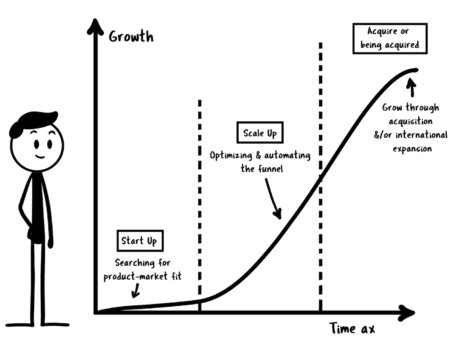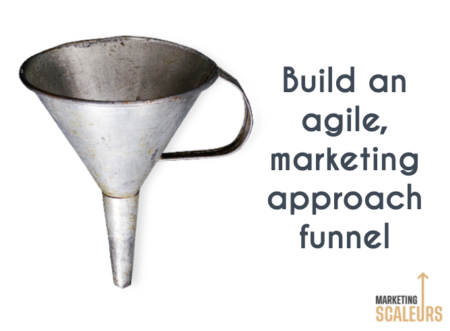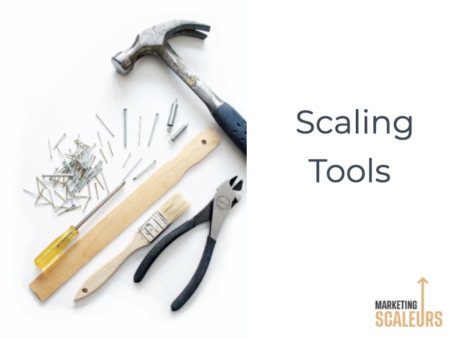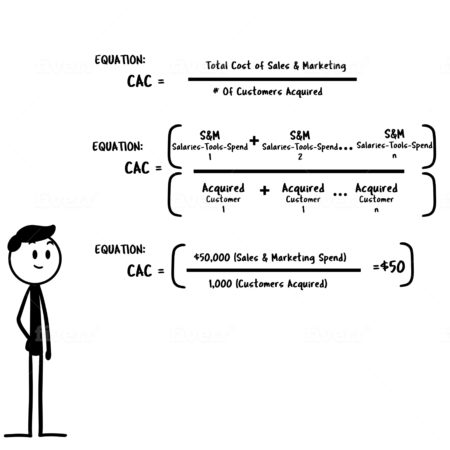How to Scale Your Business: The What, Why, When, and Who of Setting Scaling KPIs

So you want to scale your business. You’re probably figuring out where to start to maximize your scaling potential. Well, let’s start the way we would with any other part of your business: By understanding and setting Key Performance Indicators (Scaling KPIs) to scale your business. This article will walk you through the what, why, when, who, and how’s of setting your scaling KPIs. If you want a shortcut, check out our innovative DashIQ tool. Otherwise, let’s jump right in.
What Scaling KPIs
Let’s start with the basics. If you’re reading this, you probably know what KPIs – Key Performance Indicators – are. In the business world, they’re how we measure performance for a company, department, team, or individual. Using the right KPs, we have a better idea of whether we’re meeting objectives or falling short.
Why
KPIs are so useful because they allow us to break down performance into quantifiable, discrete categories that we can continue to measure over time. KPIs bring a method to the madness that is operating a growing business.
When you start to think about how to scale your business, KPIs are even more important. The right KPIs act as your north star to understand if your efforts to strategically grow are working in the way you intended.
Keep your CAC (Customer Acquisition Cost) in mind when calculating KPIs, as this will determine whether you can afford the plans you are considering. For more on understanding and calculating CAC, check out our blog post on it.
When
So we now have the basics of the “what” and the “why” down. Now we’ll throw in a complexifying variable: “when.” There’s never a perfect time to scale your business, but there are things you’ll need to know before you start. We want to minimize the unknown and have a clear plan for what is actually achievable.
Some initial questions you’ll need to ask yourself: Is your business able to grow in the ways you’d like (operationally, financially, etc)? Is your business actually able to accommodate this growth once it happens? In other words: Can you actually do it and can you maintain it?
Remember that scaling differs from pure growth in that scaling represents more growth with limited added resources. One of the most common tools for making this happen (after strategy is set) is technology. Technology has facilitated scalability in recent years by making it much easier to acquire customers and expand markets, opening unprecedented opportunities for businesses to go global. Make sure to assess your current technological capacity and technological needs in the future as you scale.
Two key indicators that are good signs that you’re ready:
- Your numbers say you’re good to go — specifically, your income shows steady growth rather than extreme fluctuations or no growth at all.
- You have a steadily growing income stream rather than one that jumps up and down every month.
How
No matter how much we systematize and structure plans for scaling, there’s always a magic and luck factor that influences the outcome. However, we can minimize the unknowns by asking some crucial questions. The answers to these questions will help you set your scaling KPIs.
- Are your finances in order?
Make sure you have a financial plan that can accommodate the unknowns and potential unintended outcomes or costs that go along with changes in business. Make projections and estimations. You can start with a simple list of “must-haves” and “nice-to-haves” and build your budget around the “musts” will room for the “nice’s.” - Are your marketing processes in order?
There are many kinds of marketing processes and it is absolutely crucial that you have a plan set up that will accommodate the change and growth. For example: What is your sales team supposed to do when a lead comes in? Create a playbook and make sure your team uses it. - Is your tech in order?
As mentioned earlier, technology is often a core component of scaling a business. As such, you need to have a clear vision of what your marketing needs are, which will in turn determine your tech needs before, during, and after initial scaling. Make sure to get a clear idea of your requirements, the tech’s functionality, and costs. Balance that with the revenue that tech will most likely generate: For example, with A-SAFE, we used Hubspot’s costly marketing suite knowing that it would generate more new business than what we paid for it.

Who
Next after “how” is a truly important component: “Who.” Who is involved in your scaling plan? Obviously the entire organization, but let’s get a little more granular. There are two main components to the “who”: your team and your customers. Use the questions below to map out the “who” part of your scaling KPIs plan.
- Do you have the right team in place?
Think seriously and thoroughly about your team’s current strengths and weaknesses. Rarely can marketing scale without hiring new talent or skill sets. This means you may have to let some employees go and probably will bring new ones on. Make sure your team is open to change, experimenting, and taking on new tasks as needs,
- Do you have enough demand?
Everything may be in place on your end, but you’ll hit the limits of what’s possible fast if there isn’t sufficient demand from your audience. Before you scale, you need to have a solid grasp on market trends and your target customers. Be sure that as you scale, you can attract enough customers to meet your goals. Inbound leads should be high or will be high with relative certainty. - What are your customers’ expectations?
And once you have the new customers and sales coming in, what are they expecting of you? Just as with understanding the market, don’t rely on assumptions, but do an analysis to get a clear idea of what your customers will want from you. Ultimately, your scaling KPIs will have to align with your customer’s needs first, then you can align your own business needs with those– it won’t work the other way around.
In Conclusion
Scaling KPIs are crucial if you want to scale, and a thorough analysis of each element of your KPIs – what, how, when, why, who – are crucial in setting your KPIs properly. If you follow the steps above, you’ll be well on your way to being ready to successfully scale your business.
Become a Successful Scaleur
Scaling is a strategy that can only be mastered by a scaleur who is a dedicated learner and considers real-time business priorities. I hope the article above has helped! Marketing Scaleurs is a scaling company that helps entrepreneurs scale their marketing efforts. We’re experts in growth marketing, product development, and more, creating custom growth plans for startups, entrepreneurs and scaleurs in order to help them gain traffic, generate leads and increase their revenue.
If you want traffic, leads and sales, get in touch and you’ll start getting results in no time!







